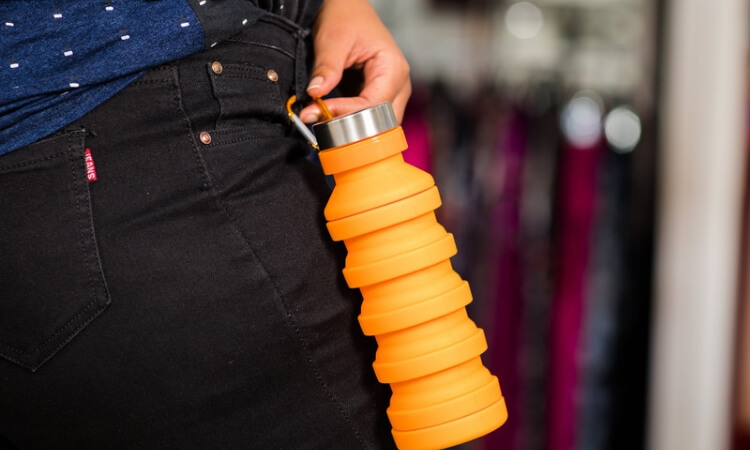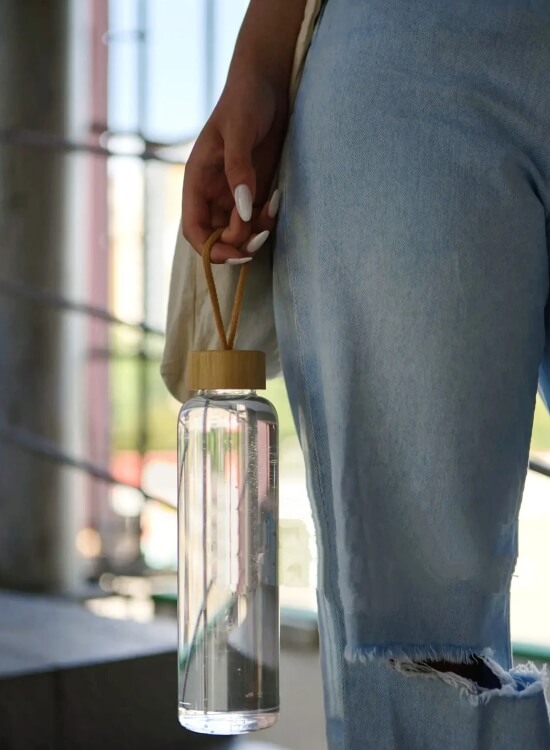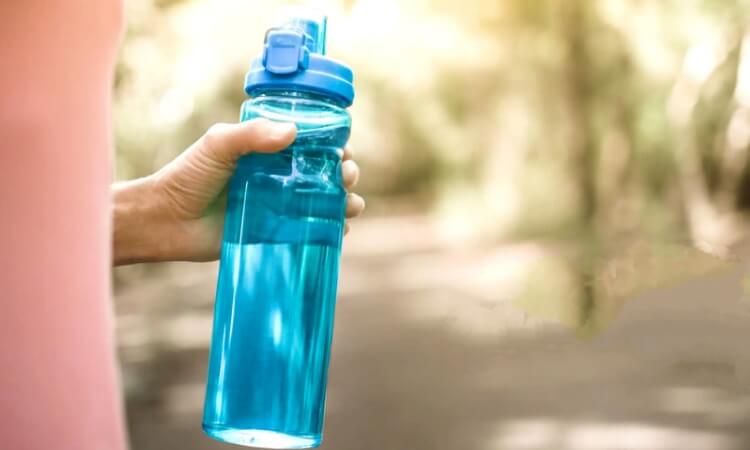As an Amazon Associate, I earn from qualifying purchases
Staying hydrated while on the move is crucial, but finding a convenient and comfortable way to carry your water bottle can often be a challenge. Whether you’re exploring the outdoors, going for a hike, or simply taking a stroll, knowing the best methods for carrying your water bottle can make a significant difference in your comfort and convenience.
In this guide, we’ll explain you how to carry a water bottle while walking. Discover easy-to-implement solutions that suit different lifestyles and activities, making your hydration on the go a seamless part of your routine.

Importance of Staying Hydrated While Walking
Walking, whether for leisure, fitness, or commuting, demands proper hydration to maintain peak performance and overall well-being. Hydration sustains bodily functions, regulates temperature, and fuels muscles, crucial for optimal physical activity.
Neglecting hydration during walks can lead to fatigue, dizziness, and decreased endurance. Thus, staying hydrated while walking is fundamental for sustained energy levels and overall health.
Challenges of Carrying a Water Bottle While On the Move
How to carry a water bottle while walking is a practical challenge in modern . Finding a balance between convenience and ease of access without compromising movement can be tricky. Bulky bottles may cause discomfort or disrupt natural gait, while inadequate carrying methods can lead to frequent stops or distractions. Additionally, the need for hands-free options and the risk of spillage are common challenges faced when carrying water bottles during walks.
Addressing these challenges with effective carrying techniques is essential for a hassle-free walking experience while staying properly hydrated.
Choosing the Right Water Bottle
Considerations for the Ideal Water Bottle:
When selecting a water bottle for walking, several factors merit consideration:
- Size and Capacity: Opt for a size that suits your hydration needs without adding unnecessary weight.
- Material: Consider durable materials like stainless steel, BPA-free plastic, or lightweight aluminum.
- Insulation: Evaluate the need for insulation to maintain water temperature, especially in varying weather conditions.
- Lid Design: Choose a secure, spill-proof lid that allows easy sipping while on the move.
- Weight and Portability: Balance sturdiness with portability, ensuring it doesn’t hinder your walk.
Different Types of Water Bottles Suitable for Walking:
- Stainless Steel Bottles: Known for durability and temperature retention, ideal for longer walks or varying climates.
- Collapsible Bottles: Space-saving and lightweight, perfect for short walks or travels where storage is limited.
- Plastic Bottles with Straws: Easy to sip from without stopping, suitable for brisk walking or workouts.
- Insulated Bottles: Maintain water temperature for extended periods, suitable for hot or cold weather walks.
- Hydration Bladders: Ideal for longer walks or hikes, allowing hands-free hydration via a tube and backpack attachment.
Techniques for Carrying Water Bottles

Handheld Methods:
- Grips and Handles: Utilize bottles with ergonomic grips or handles for easy carrying.
- Using Bottle Loops or Straps: Attach straps or loops to bottles for a secure grip or hands-free carrying options.
Waist and Belt Attachments:
- Waistbands with Bottle Holders: Opt for waistbands equipped with holders specifically designed to carry water bottles securely.
- Utility Belts and Hydration Packs: Utilize utility belts or specialized hydration packs featuring compartments for bottles.
Backpack and Bag Options:
- Dedicated Bottle Compartments: Choose backpacks or bags with designated compartments tailored to fit water bottles.
- Attachment Points and Accessories: Utilize attachment points or additional accessories on bags to secure bottles externally for easy access.
DIY Solutions and Hacks

Homemade Bottle Carriers:
- Fabric Holders: Create fabric sleeves or pouches tailored to fit your bottle’s size and shape, using materials like cloth, neoprene, or felt.
- Paracord Holders: Craft holders using paracord knots or weaving techniques for a customized, secure grip on the bottle.
Innovative Ways to Carry Bottles Using Everyday Items:
- Carabiner Clips: Use carabiners to attach bottles to belts, backpacks, or loops for hands-free carrying.
- Sock or Cloth Wraps: Wrap bottles in socks or cloth pieces to provide cushioning and prevent clinking while carrying them in bags or backpacks.
Tips for Comfort and Convenience
Proper Weight Distribution and Balance:
- Center of Gravity: Distribute weight evenly by positioning the water bottle at the center to maintain balance and prevent strain.
- Adjust Straps and Holders: Ensure straps or holders are snug but not too tight, allowing comfortable movement without causing discomfort.
Accessibility and Ease of Access While Walking:
- Optimal Placement: Position the water bottle where it’s easily reachable without interrupting your stride or posture.
- Quick Access Features: Choose bottles or carriers with quick-access features like flip-top lids or one-hand opening mechanisms for seamless hydration.
Adjusting Carrying Methods for Different Activities:
- Consider Activity Demands: Modify carrying techniques based on the intensity and duration of the activity; for instance, opt for hands-free options during high-intensity workouts.
- Adapt to Terrain: Adjust carrying methods to suit different terrains, ensuring stability and minimizing disruptions during walks on uneven surfaces or trails.
Hydration Systems and Alternatives
Consideration of Hydration Systems like Hydration Vests or Bladders:
- Hydration Vests: Explore vests designed with built-in hydration compartments, allowing easy access to water without disrupting movement.
- Hydration Bladders: Consider using bladder systems that can be integrated into backpacks or vests, providing hands-free access to water through a hose or tube.
Alternatives such as Collapsible or Foldable Water Bottles:
- Collapsible Bottles: Opt for bottles that can be compressed or collapsed when empty, saving space and offering convenience during walks.
- Foldable Water Bottles: Consider bottles that can be folded or rolled up after use, making them easily packable and portable.
Conclusion
From handheld grips and waist attachments to dedicated compartments in bags, various techniques cater to individual preferences. DIY solutions and innovative hacks provide personalized options. Additionally, considering hydration systems like vests and collapsible bottles offer versatile choices to suit different needs.
Hydration is paramount during walking activities, impacting performance and well-being. Properly carrying water bottles ensures accessibility, encouraging regular hydration. Staying mindful of hydration needs while walking promotes sustained energy levels and overall health.
Incorporating these effective carrying methods and maintaining hydration on the move not only enhances comfort but also supports a healthier and more enjoyable walking experience.
Frequently Asked Questions (FAQ)
Q: What’s the best way to carry a water bottle while walking?
A: The ideal method depends on personal preference and activity. Handheld grips, waist attachments, and backpack compartments are popular options.
Q: How can I prevent my water bottle from leaking while walking?
A: Look for bottles with secure lids and consider leak-proof designs. Ensure proper sealing before walking, and if carrying in a bag, use designated compartments or sealable pouches.
Q: Are there hands-free options for carrying water bottles?
A: Yes, waistbands with bottle holders, utility belts, hydration vests, and hydration bladders offer hands-free solutions, allowing easy access to water without holding the bottle.
Q: What types of water bottles are best for walking or hiking?
A: Stainless steel bottles for durability, collapsible bottles for space-saving, and insulated bottles for temperature maintenance are recommended.
Q: How can I carry a water bottle comfortably during long walks?
A: Ensure proper weight distribution, adjust straps or holders for comfort, and position the bottle for easy access. Consider using hydration systems or vests for extended walks.
Q: Any tips for staying hydrated during outdoor activities?
A: Drink water before you feel thirsty, especially in hot or humid conditions. Carry enough water, and if walking for an extended period, consider electrolyte supplements or sports drinks.
As an Amazon Associate, I earn from qualifying purchases
Leave a Reply